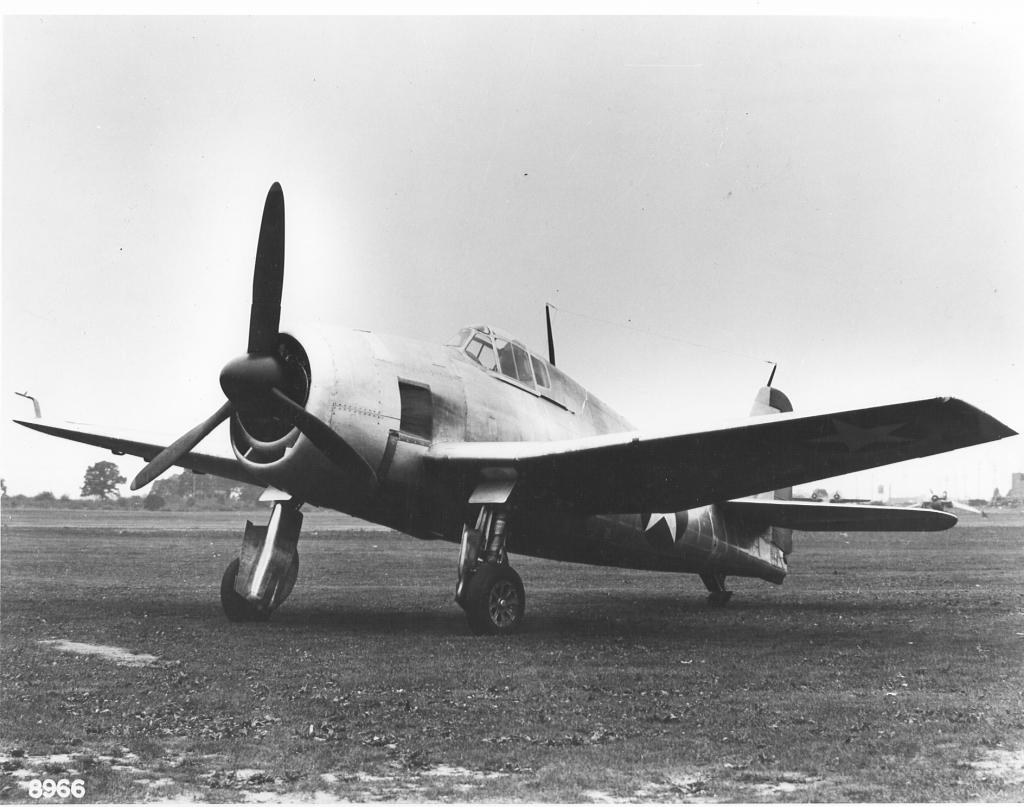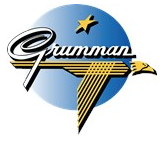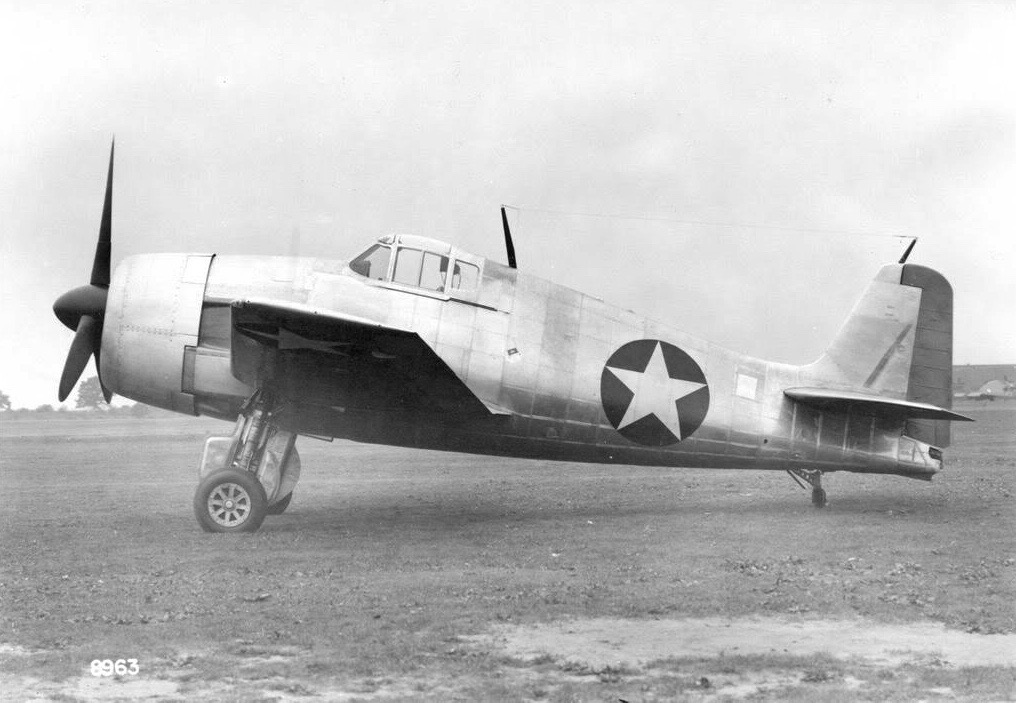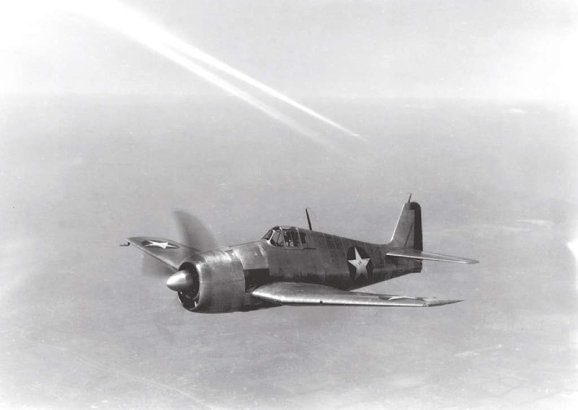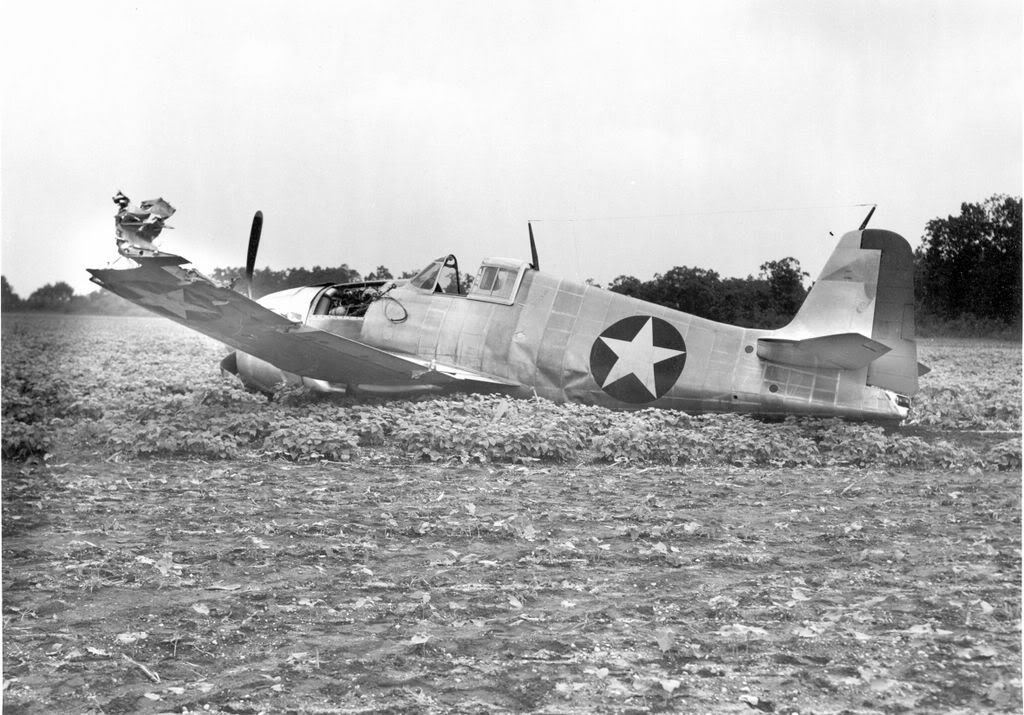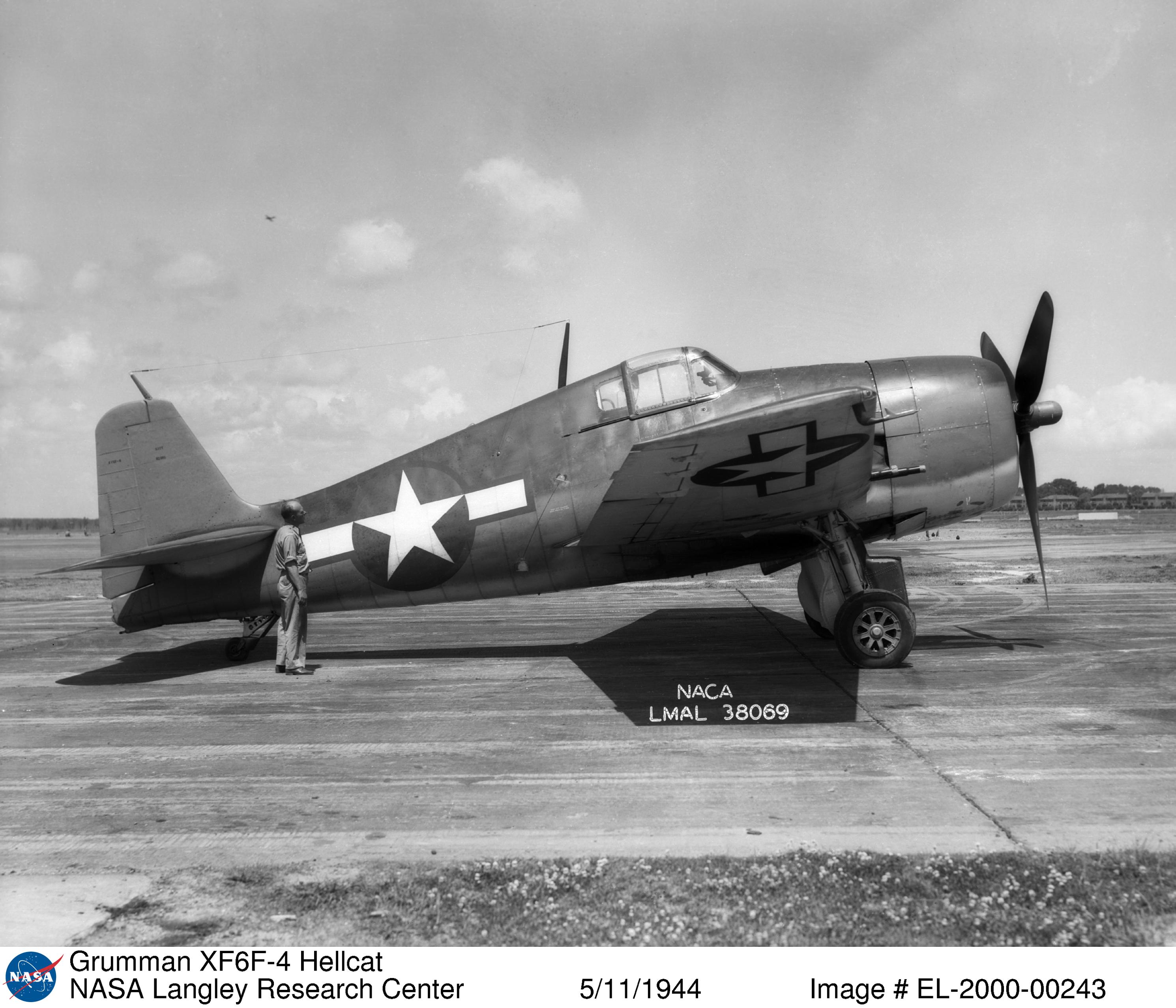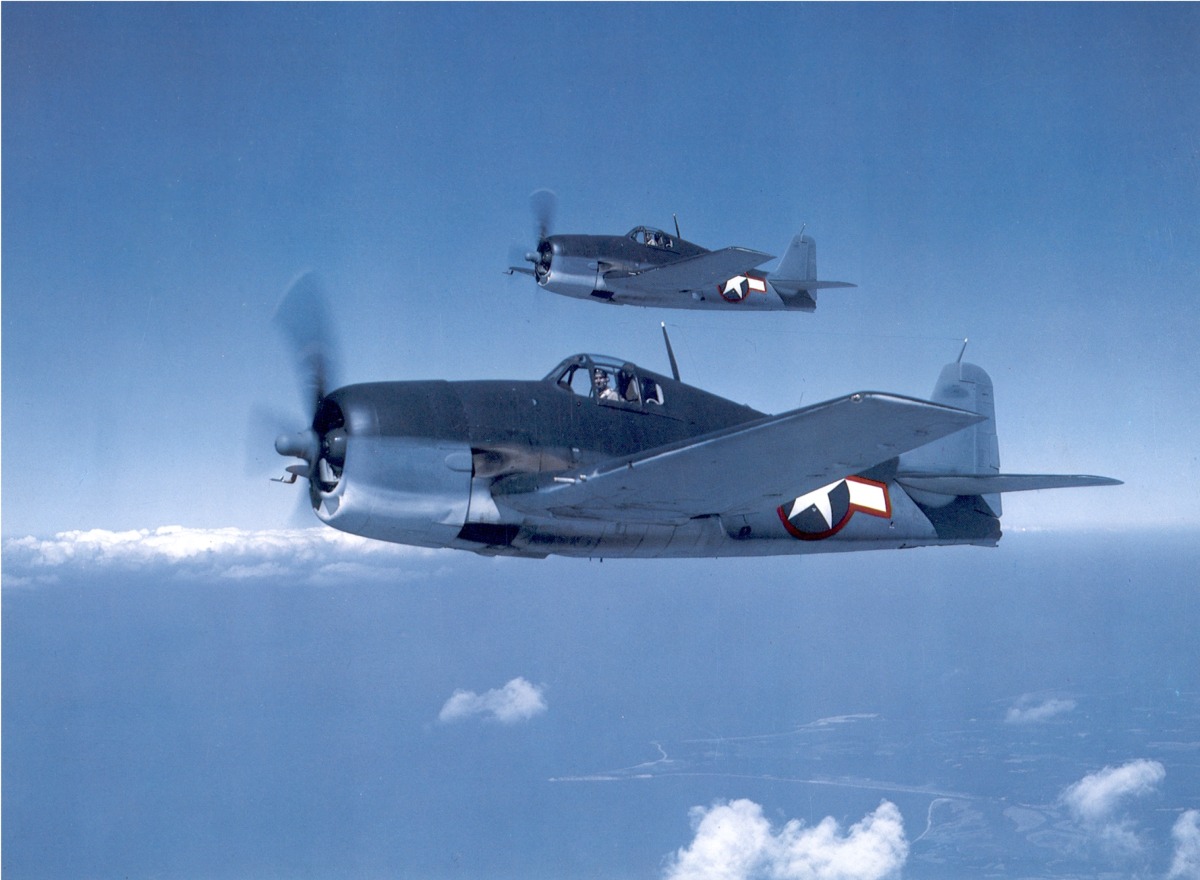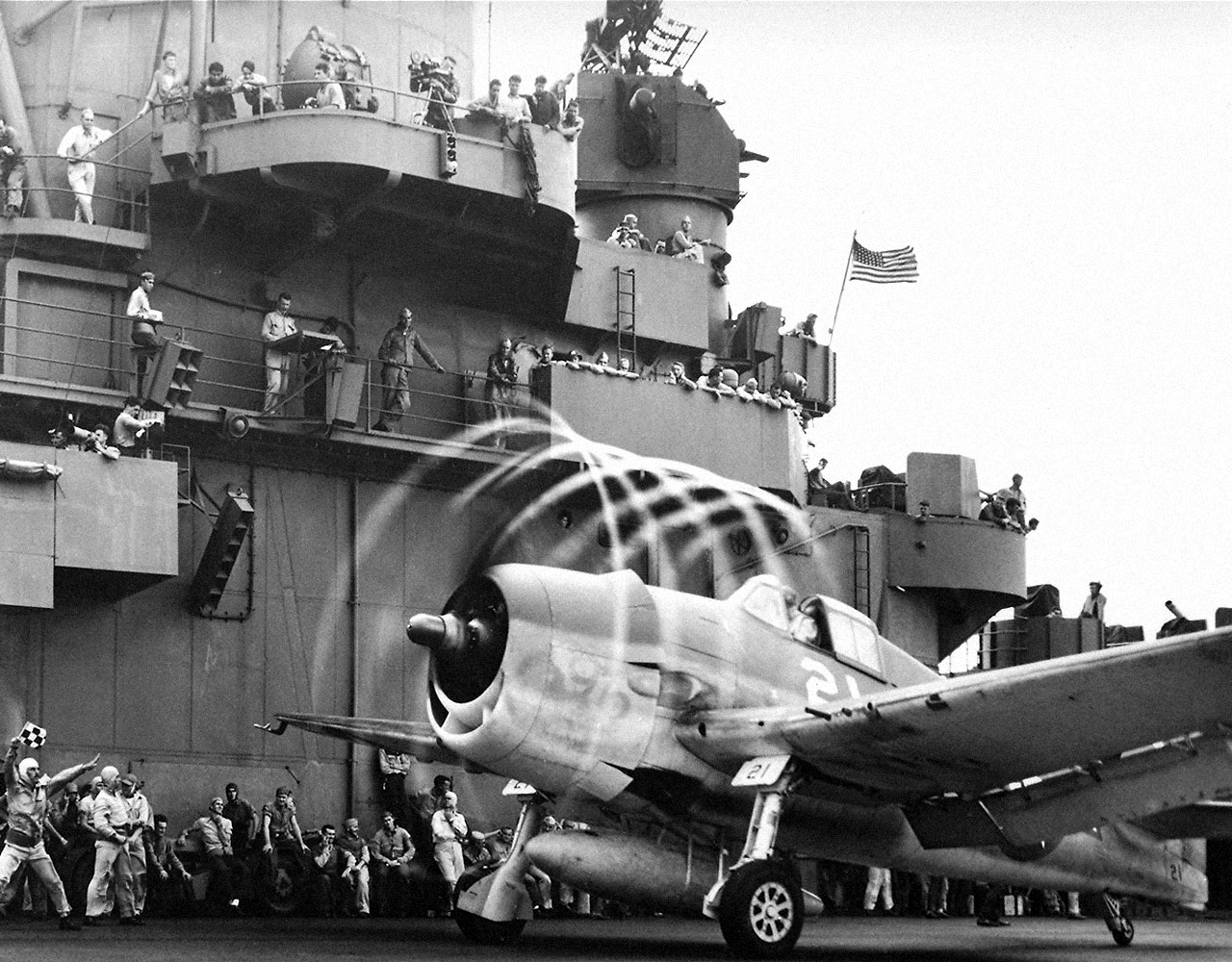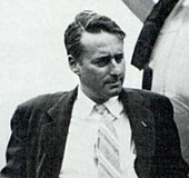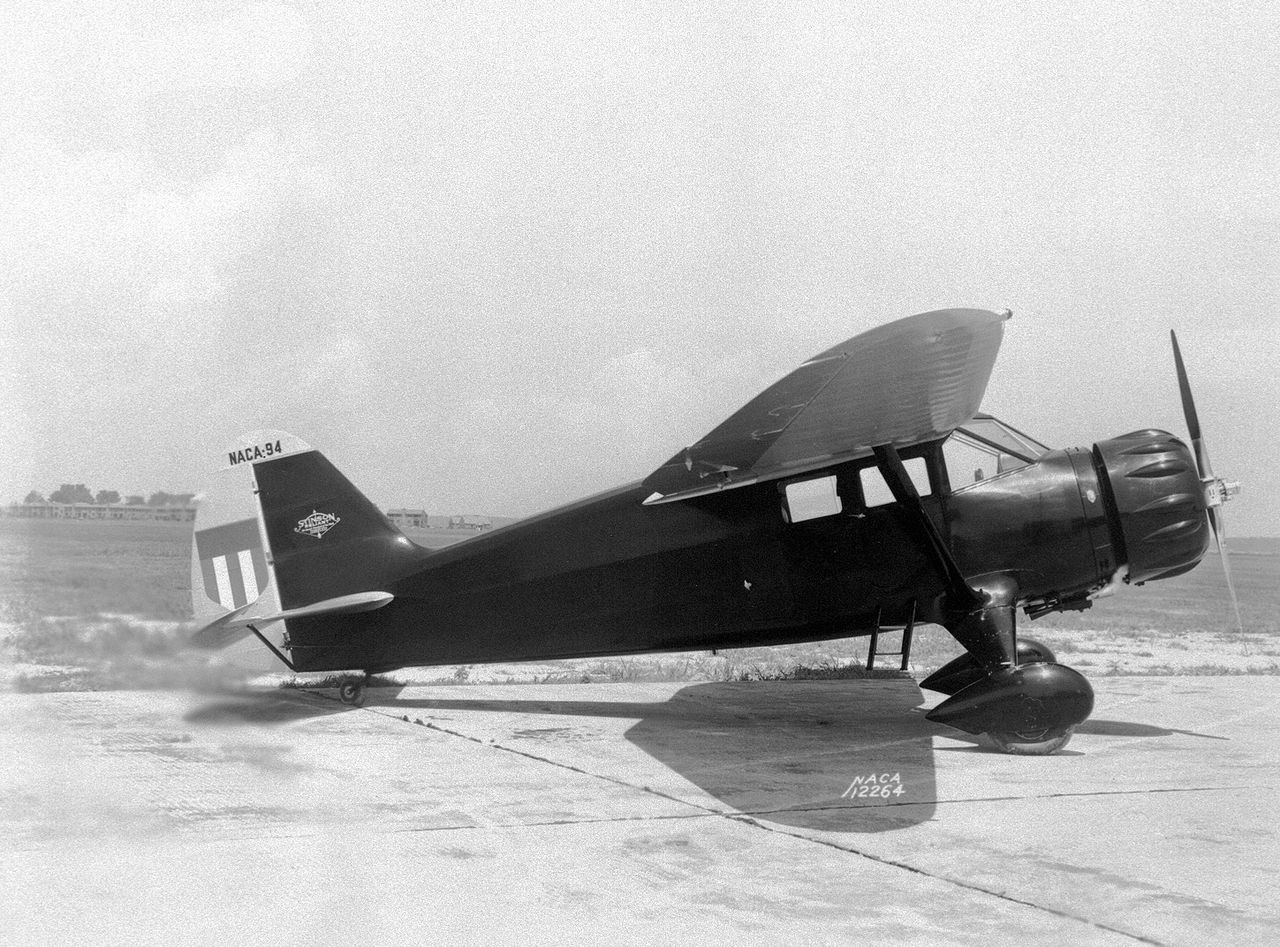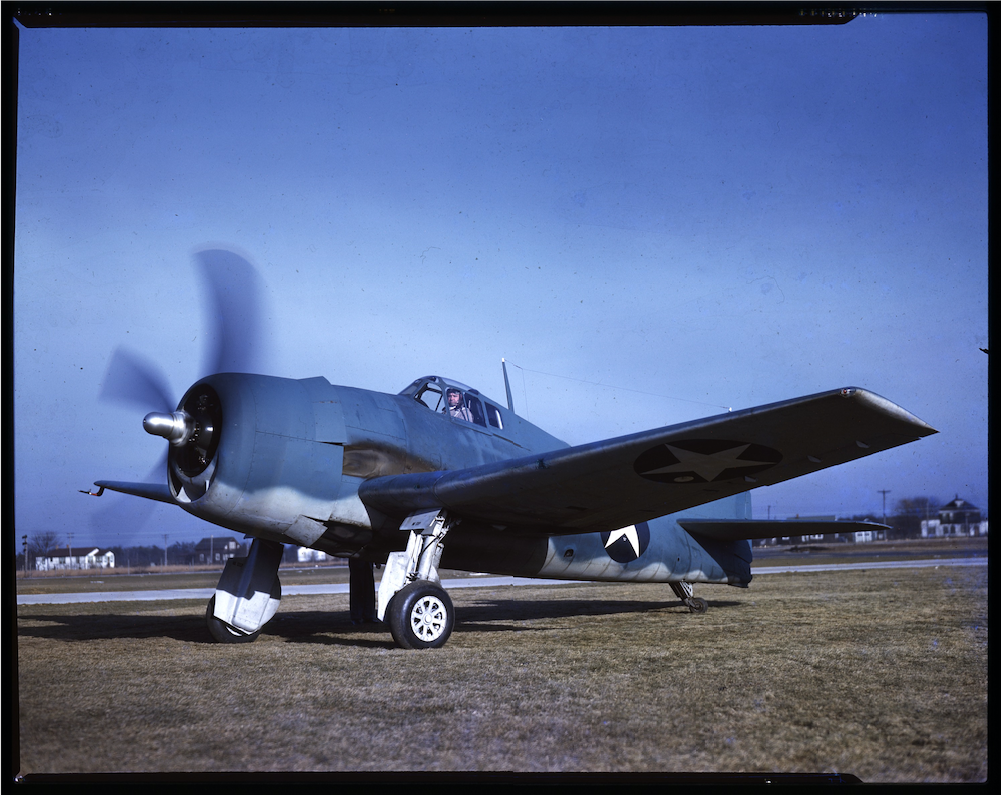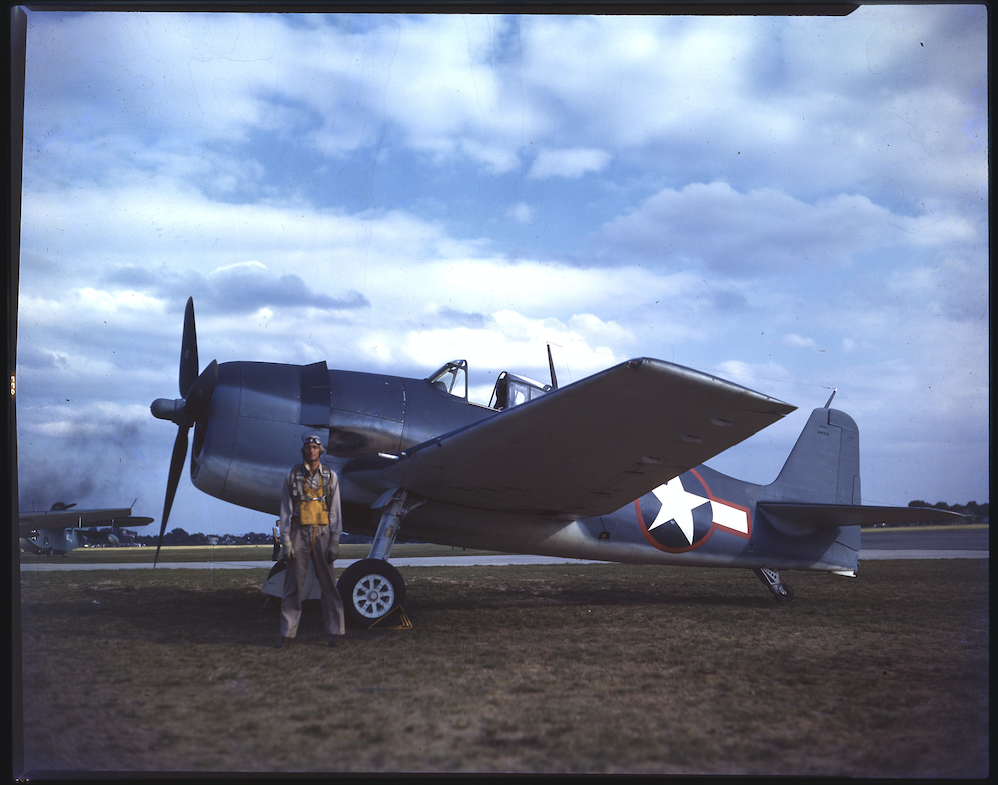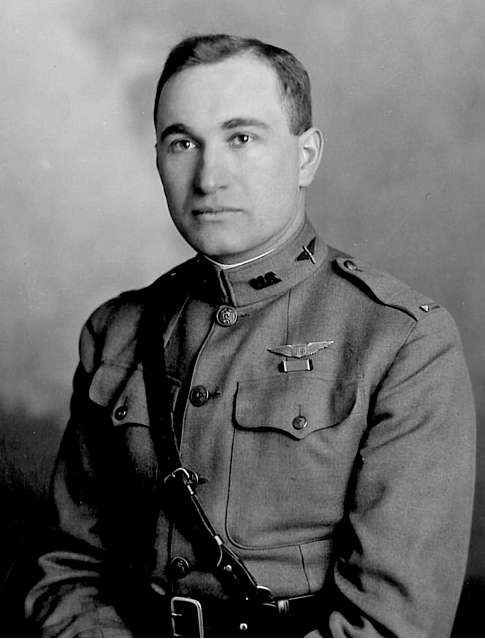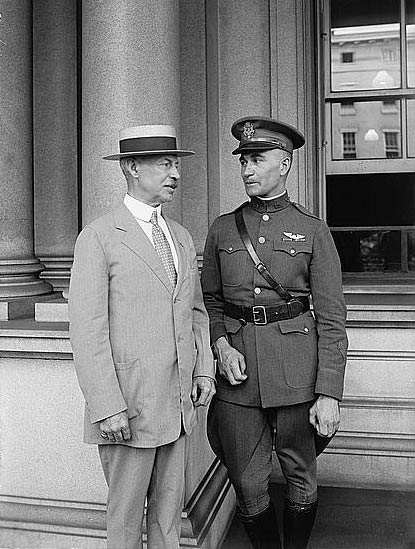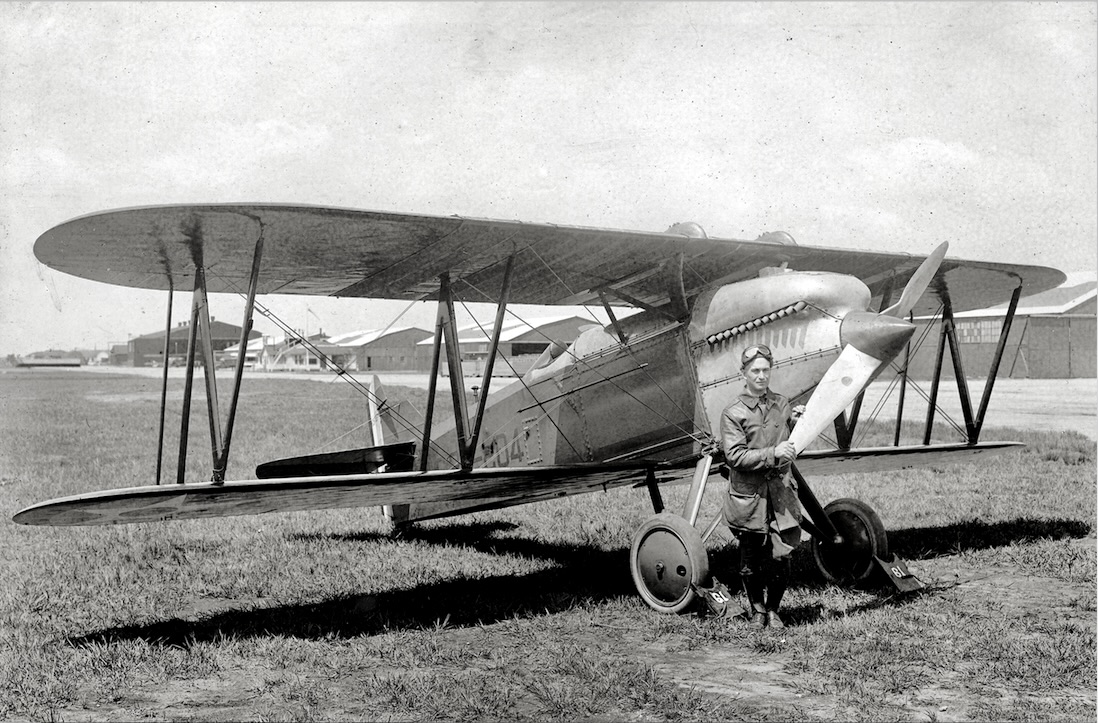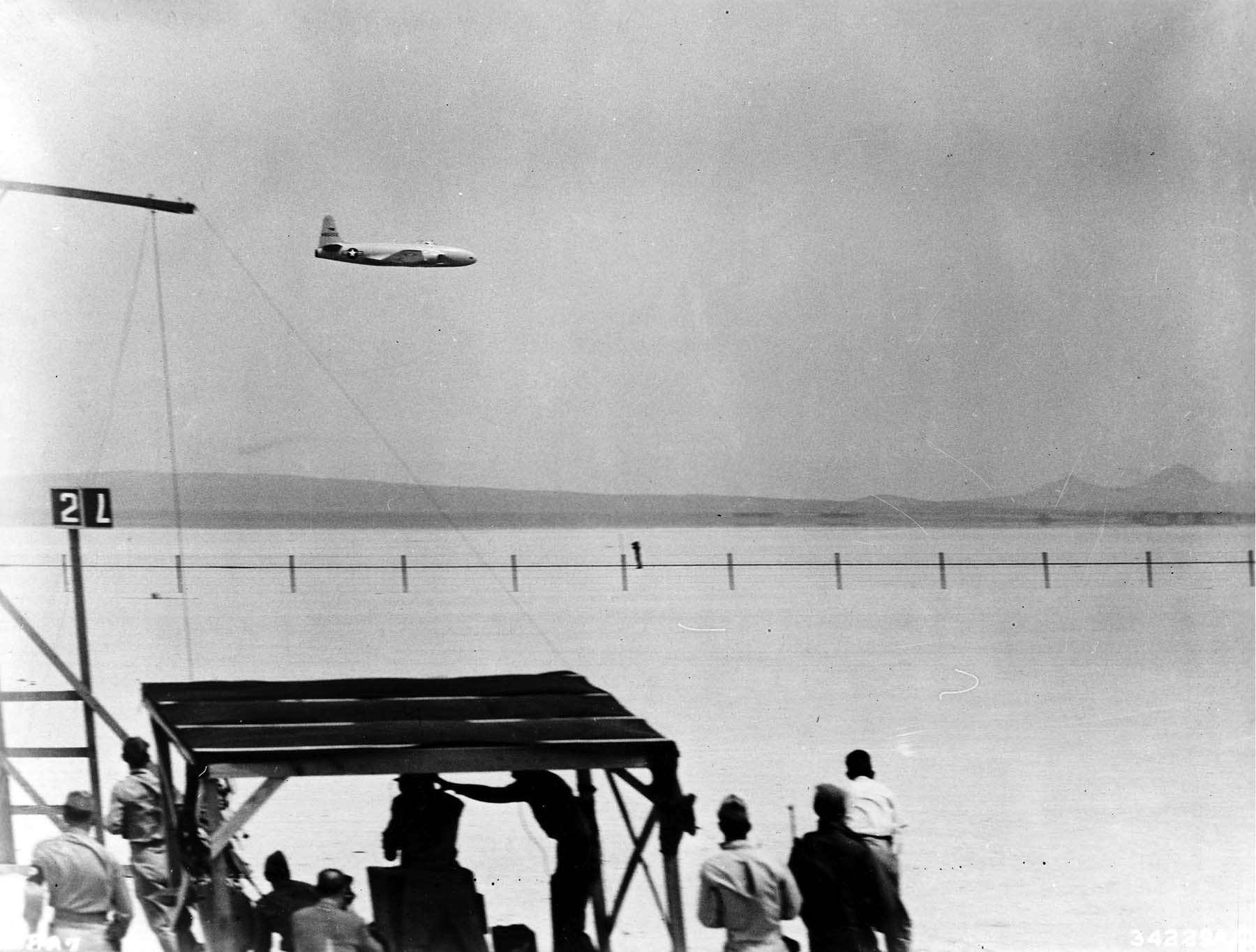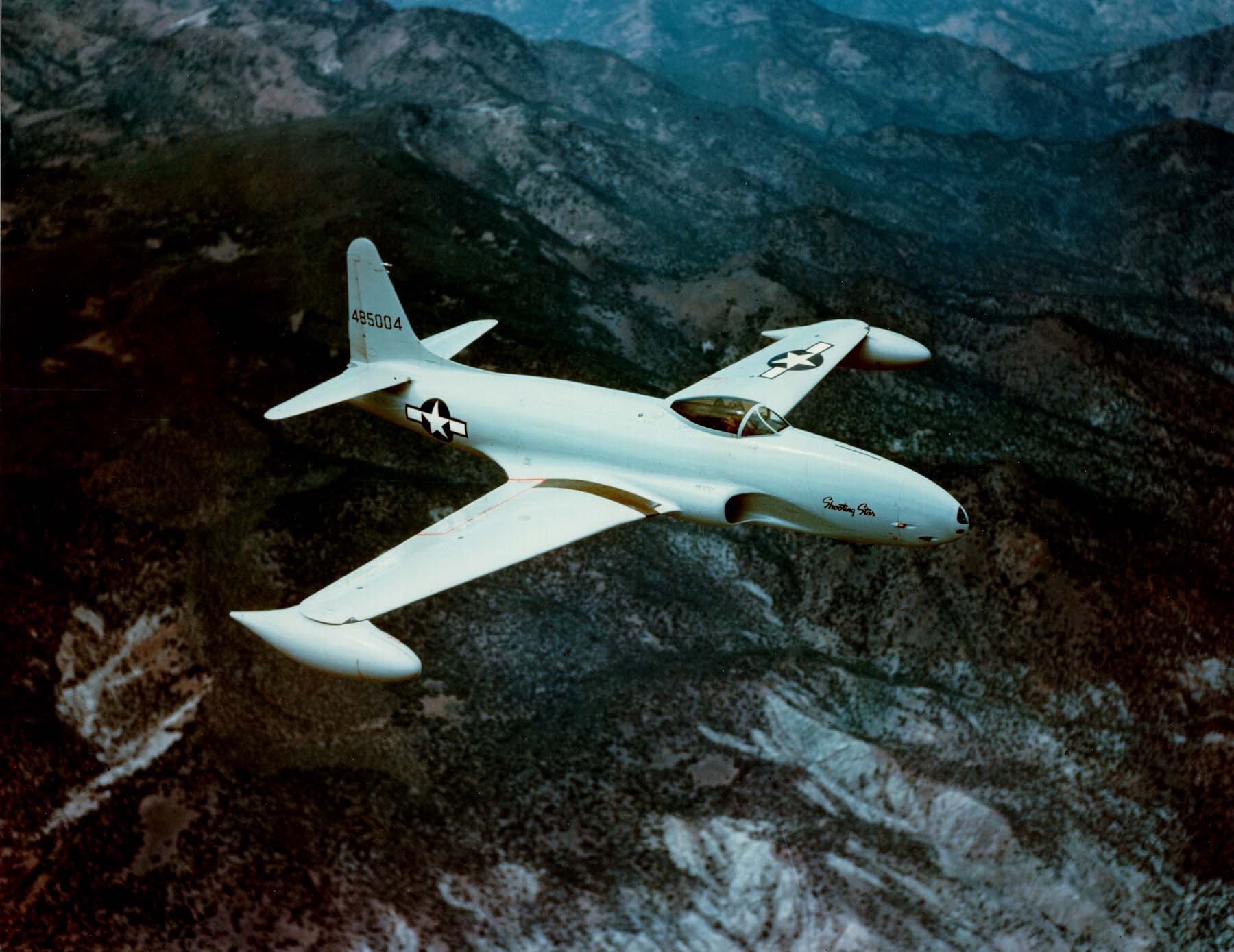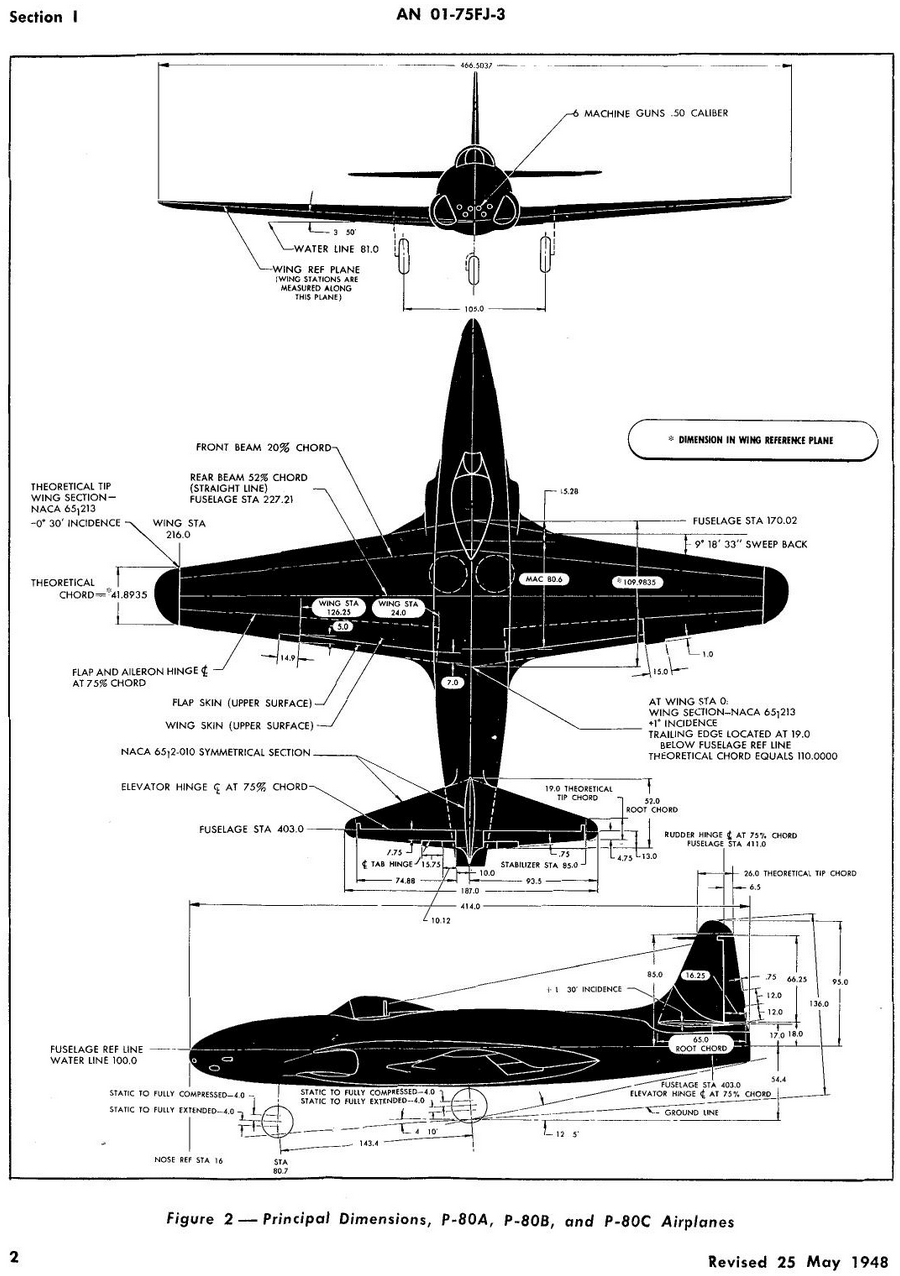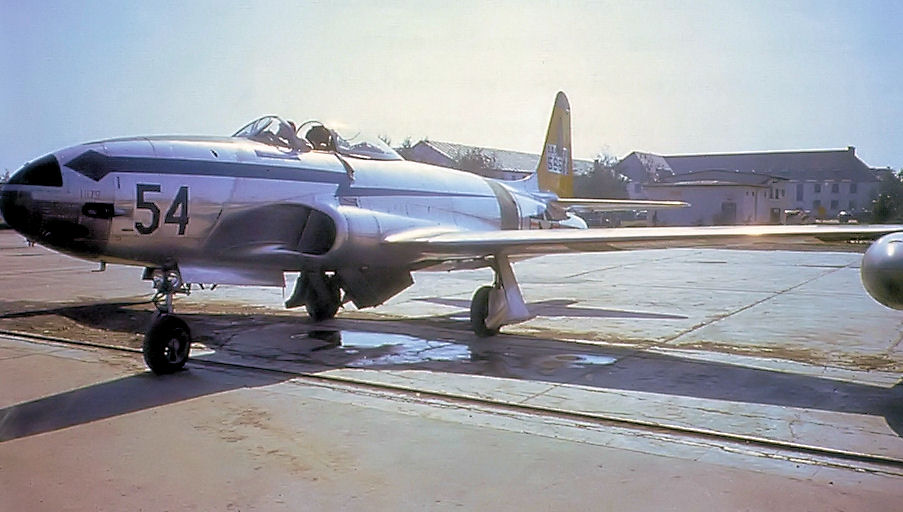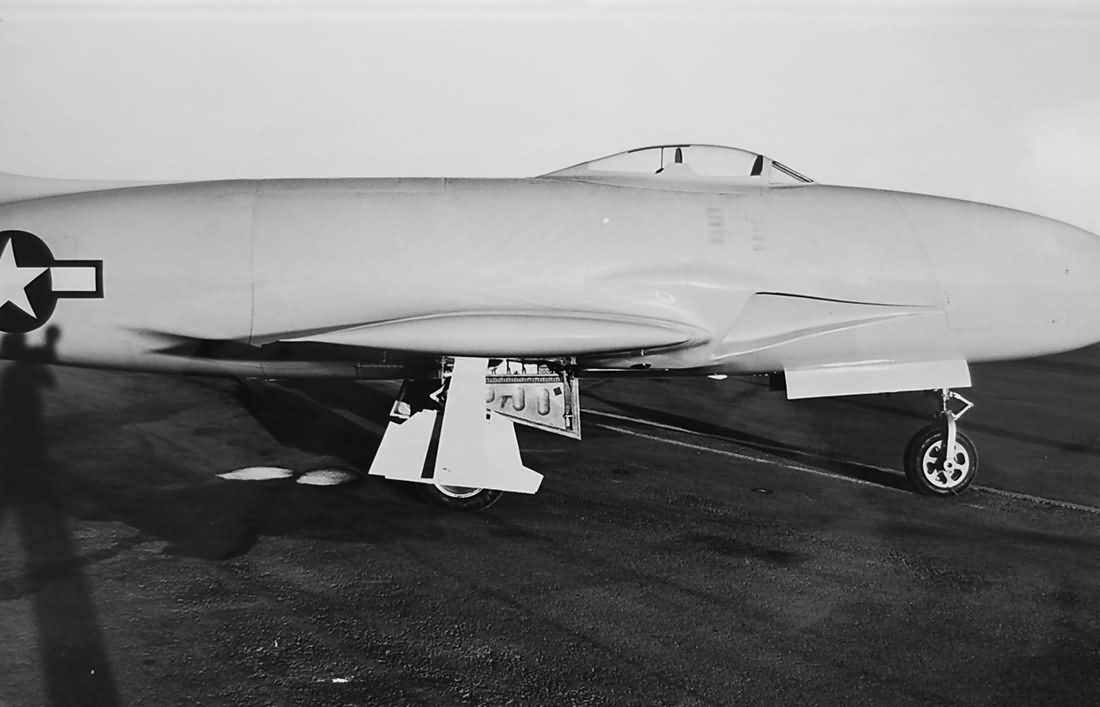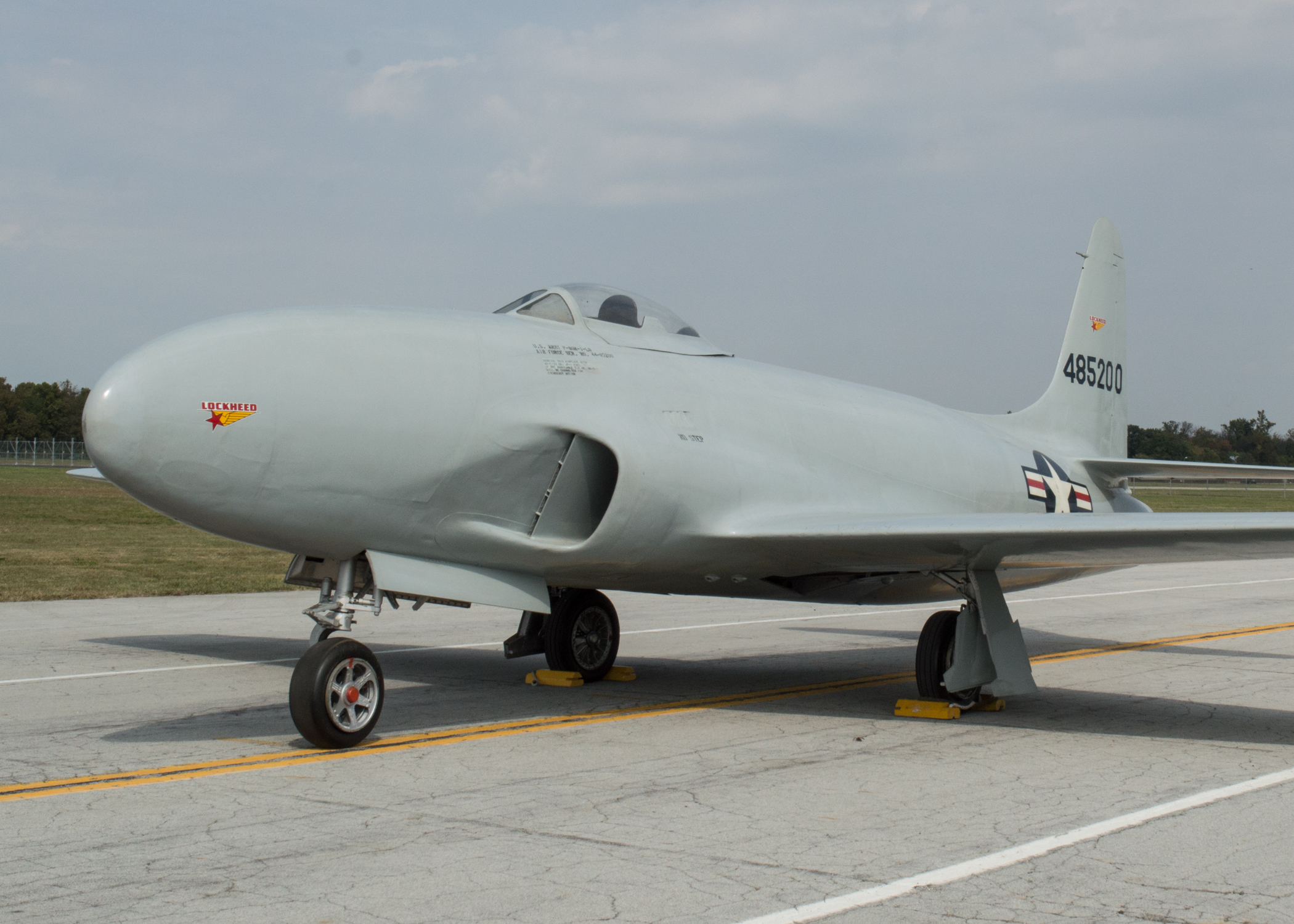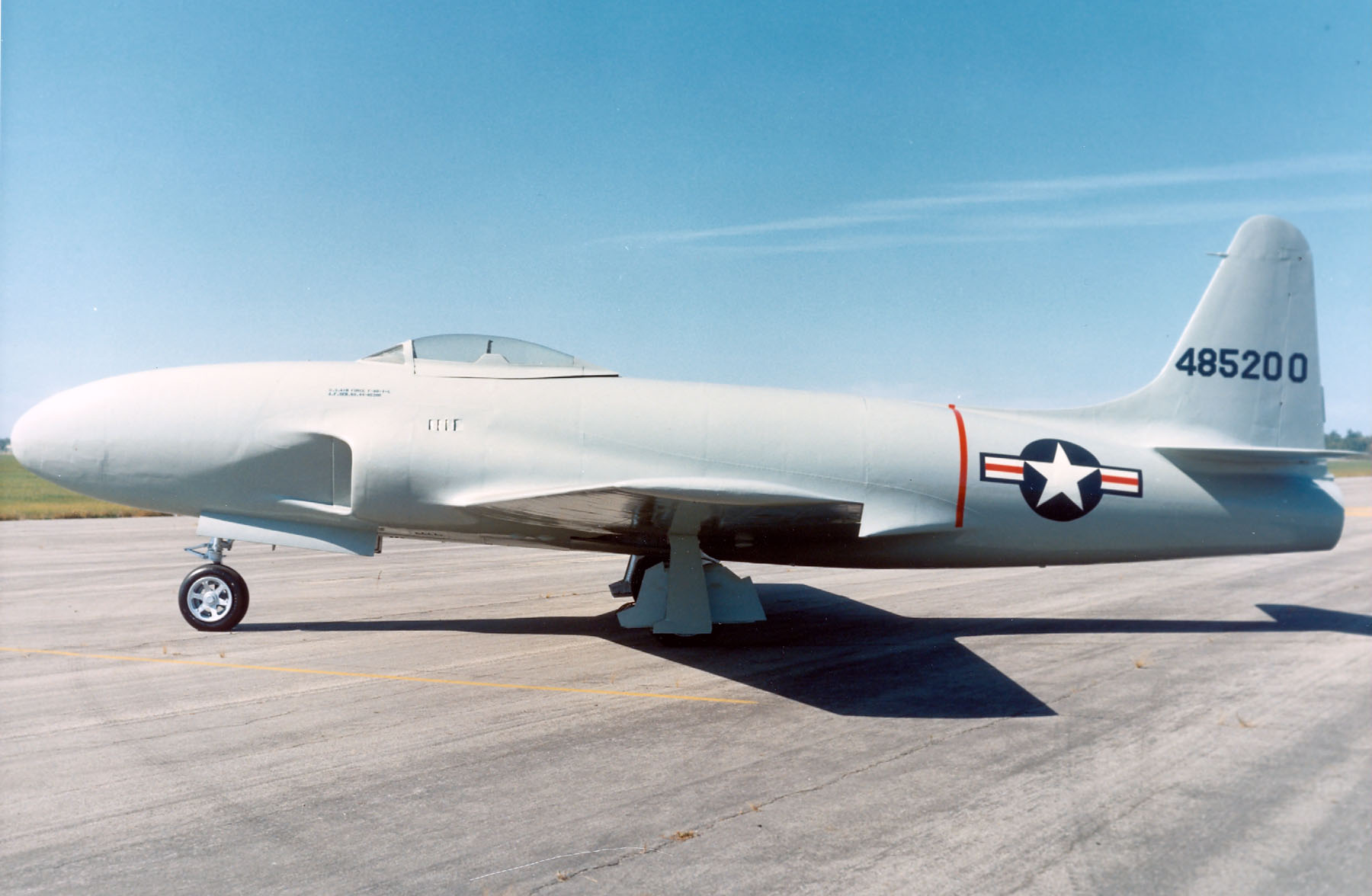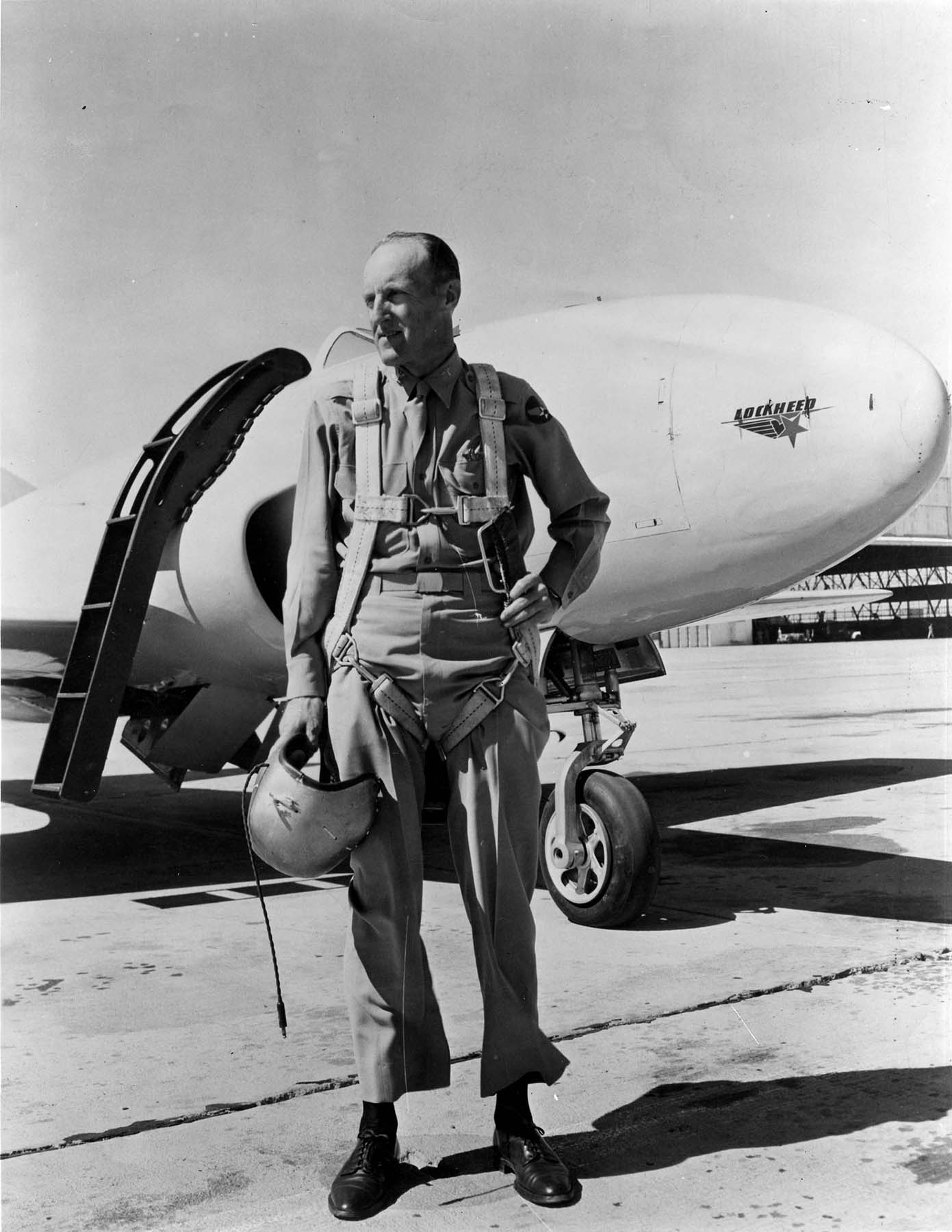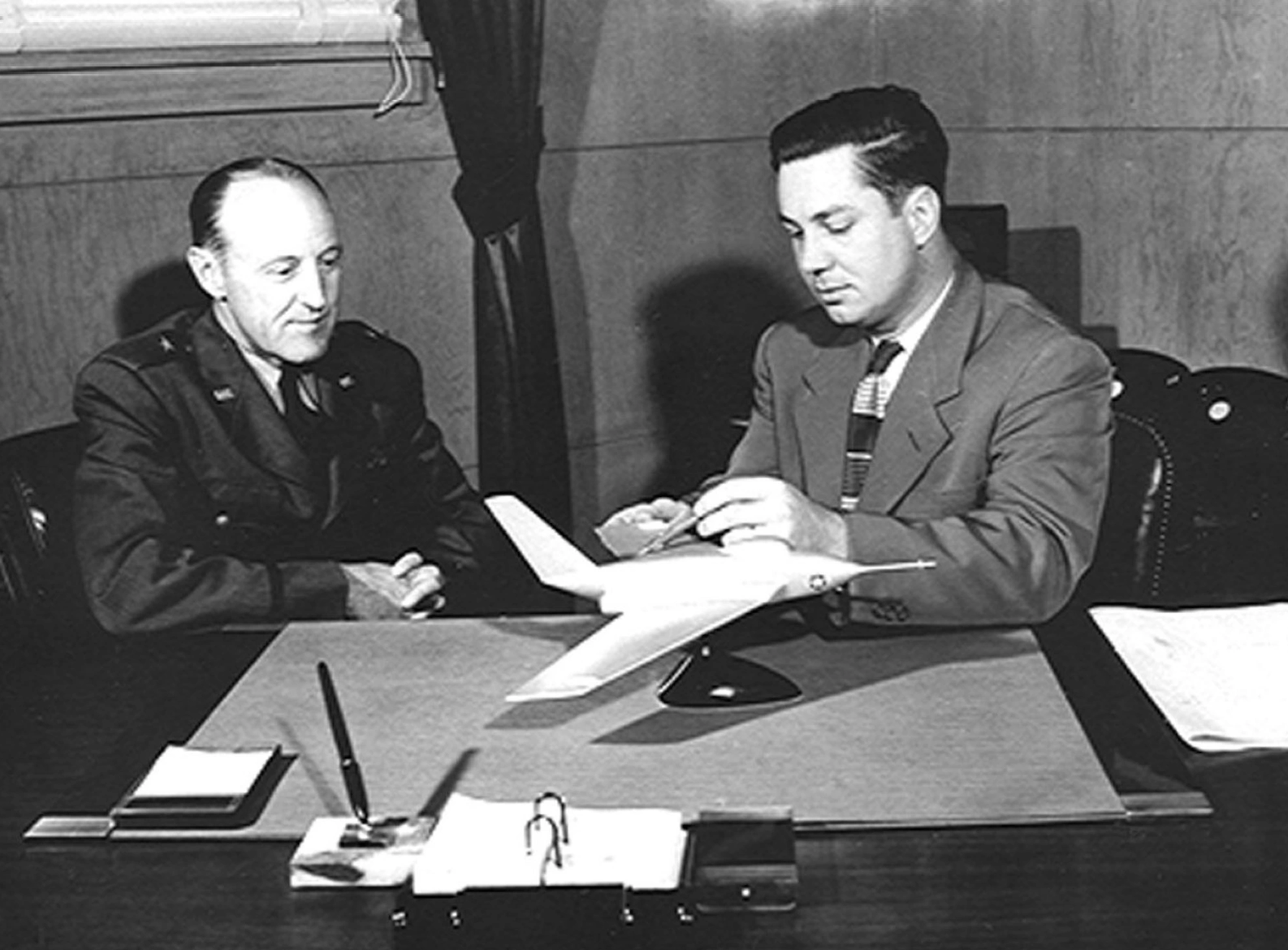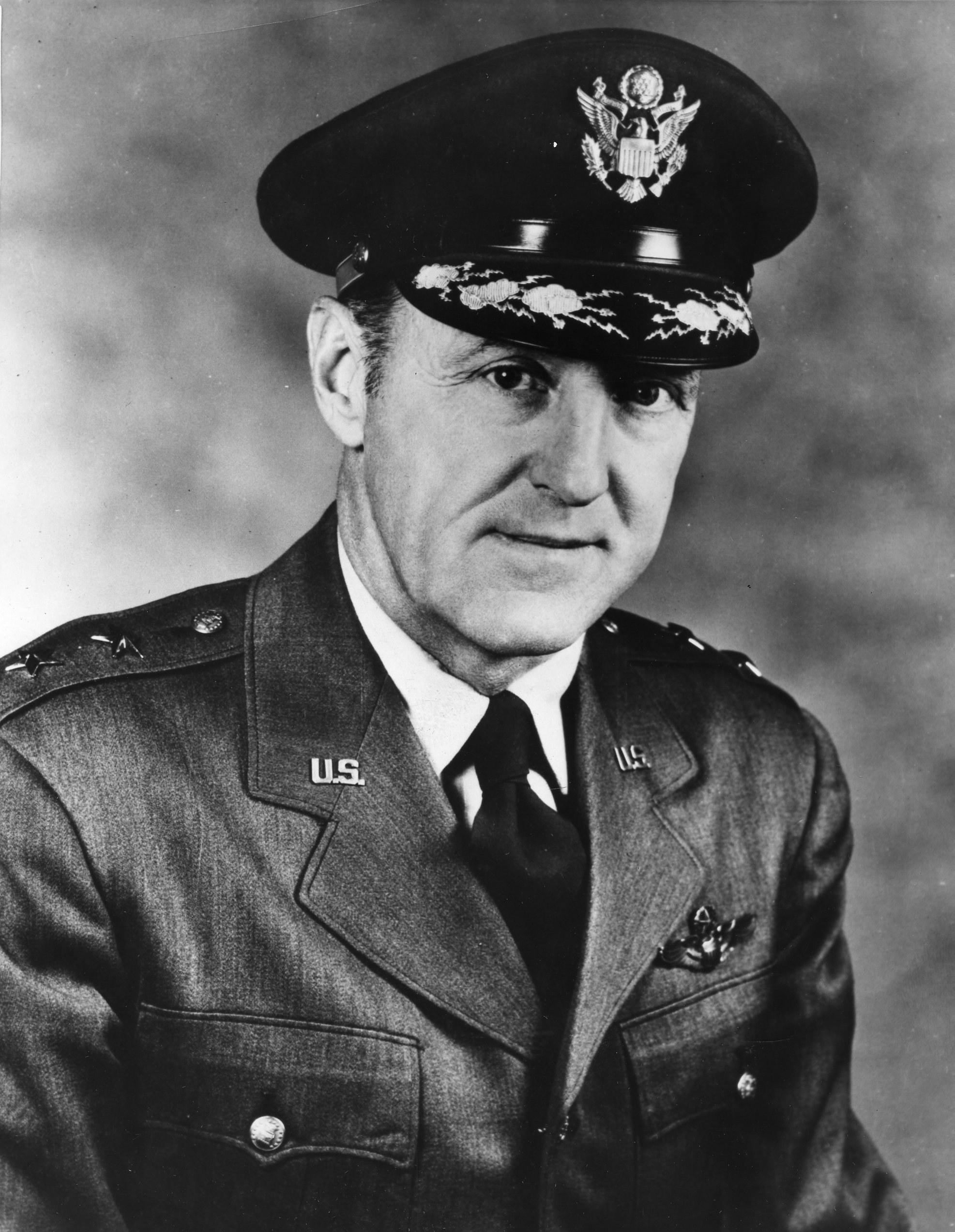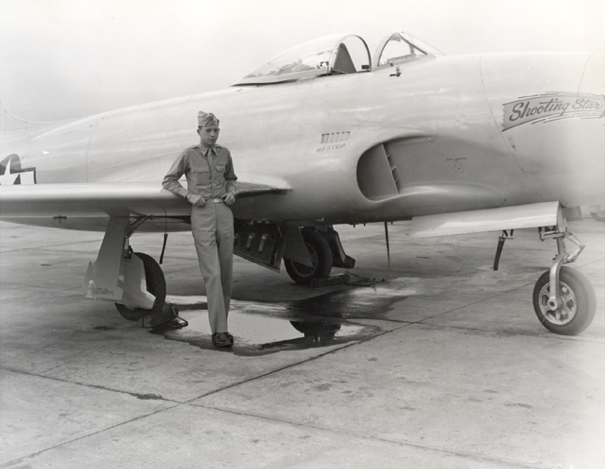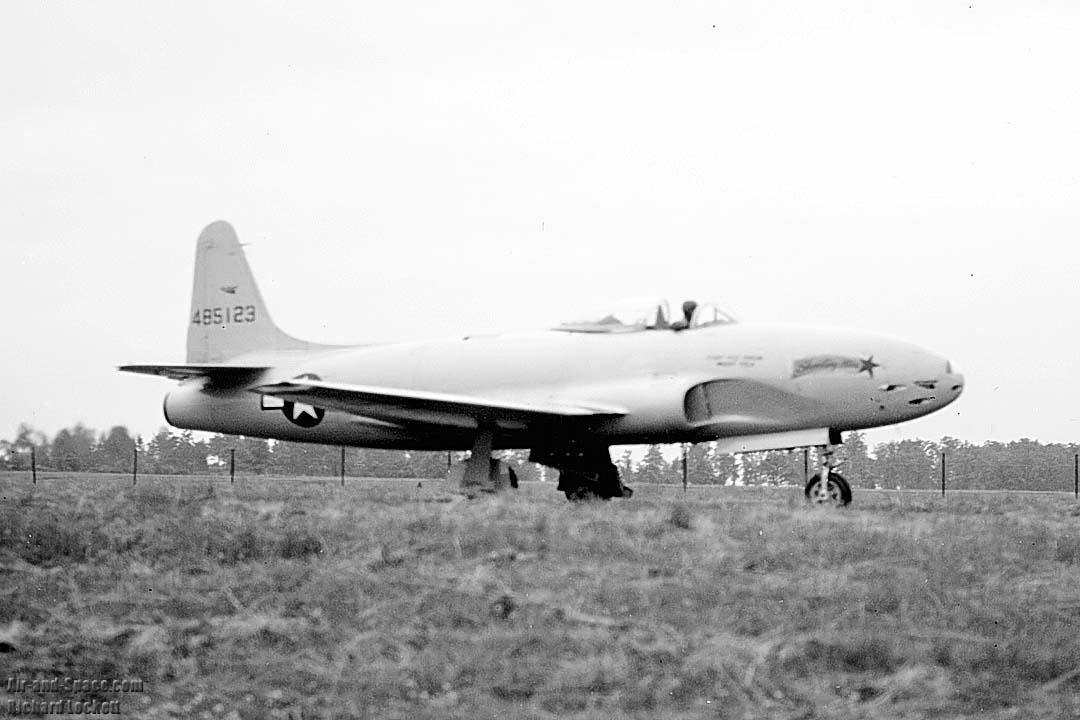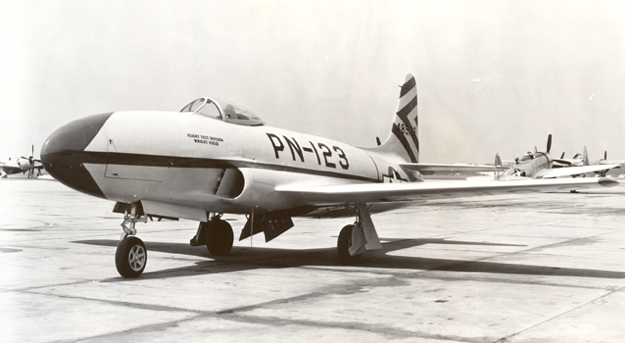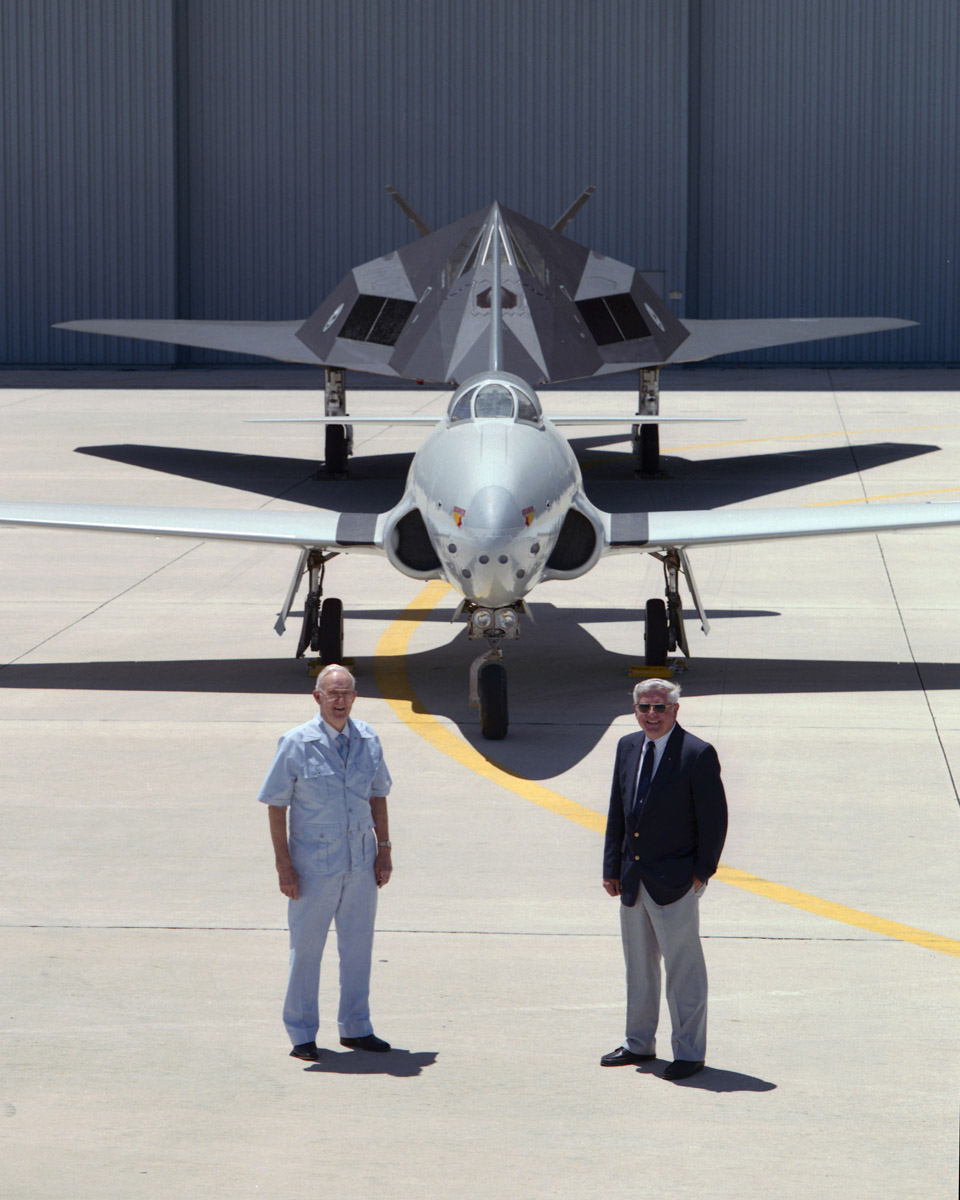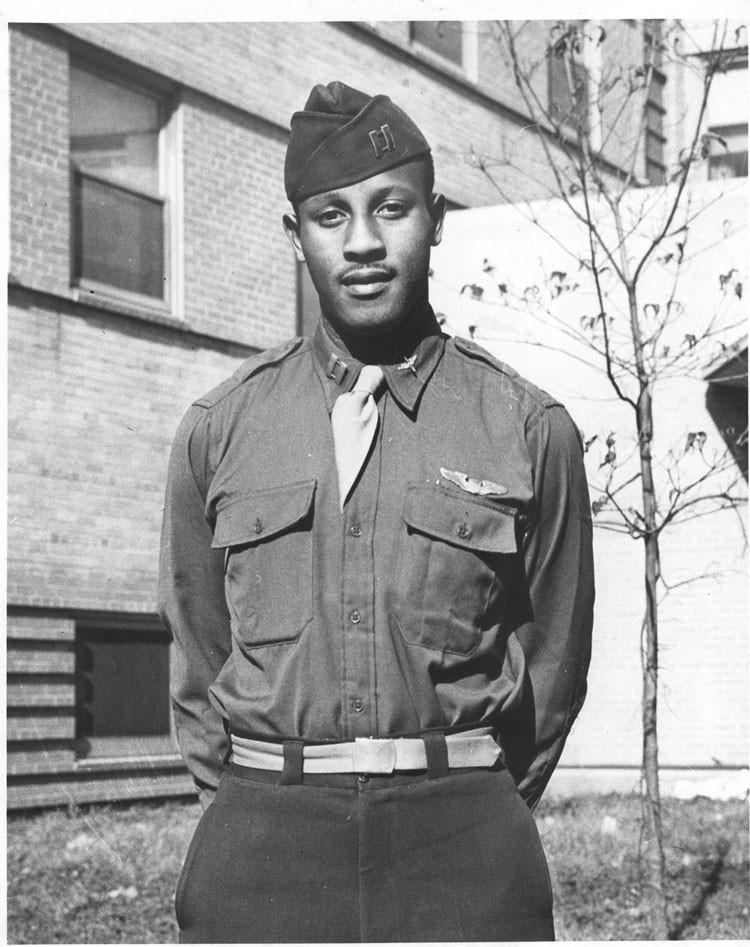
2 July 1943: 1st Lieutenant Charles Blakesly Hall, United States Army Air Corps, of the 99th Fighter Squadron (which was briefly attached to the 324th Fighter Group) was the first of the famous “Tuskegee Airmen” to shoot down an enemy airplane during World War II. At the time the 99th was based at El Haouaria Airfield on the coast of Tunisia and was patrolling the island of Sicily. The squadron’s primary mission was ground attack.
On 2 July, the 99th was escorting North American Aviation B-25 Mitchell medium bombers near Castelventrano, in western Sicily. Enemy fighters intercepted the flight.
It was my eighth mission and the first time I had seen the enemy close enough to shoot him. I saw two Focke-Wulfs following the bombers just after the bombs were dropped. I headed for the space between the fighters and bombers and managed to turn inside the Jerries. I fired a long burst and saw my tracers penetrate the second aircraft. He was turning to the left, but suddenly fell off and headed straight into the ground. I followed him down and saw him crash. He raised a big cloud of dust.
Lieutenant Hall was officially credited with destroying a Focke-Wulf Fw 190,¹ the most effective Luftwaffe fighter of World War II. Not only was Lieutenant Hall’s victory the first for the squadron, but it was also the only enemy airplane to have been shot down by the 99th Fighter Squadron during 1943.
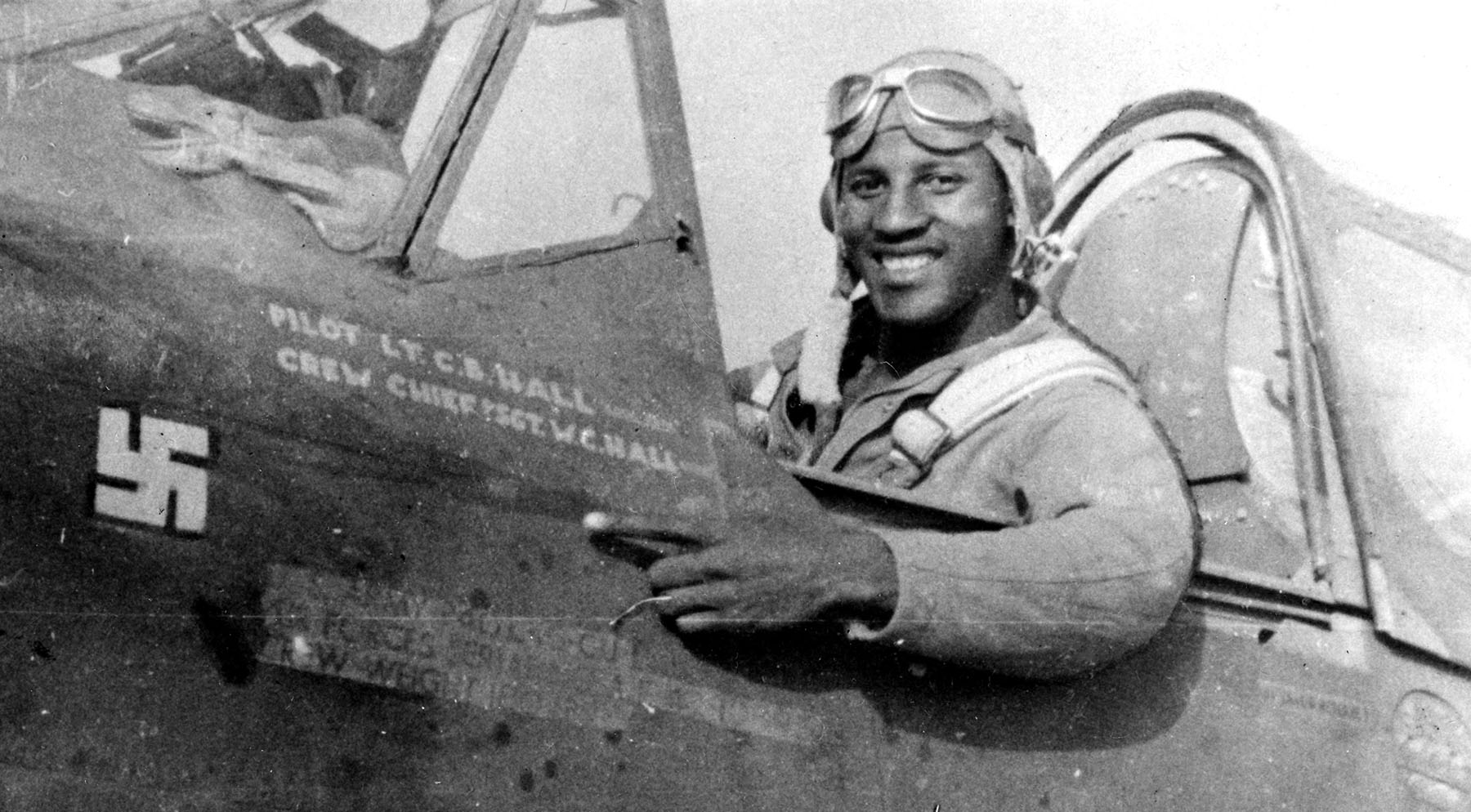
Charles Blakesly Hall was the second child of Franklin Hall, a 30-year-old kiln-burner from Mississippi, and Anna Blakesly Hall, 25 years old, and also from Mississippi. Charles was born 25 August 1920 at his parents home, 742 N. Columbia Street, Brazil, Indiana. He graduated from Brazil High School in 1938 and then attended Eastern Illinois University. He majored in Pre-Med, and was active in sports. Hall worked as a waiter while attending college.
After three years of college, on 12 November 1941, Hall enlisted as an Aviation Cadet, Air Corps, United States Army, at Fort Benjamin Harrison, Lawrence, Indiana. Military records indicate that he stood 5 feet, 7 inches tall (170 centimeters) and weighed 150 pounds (68 kilograms).
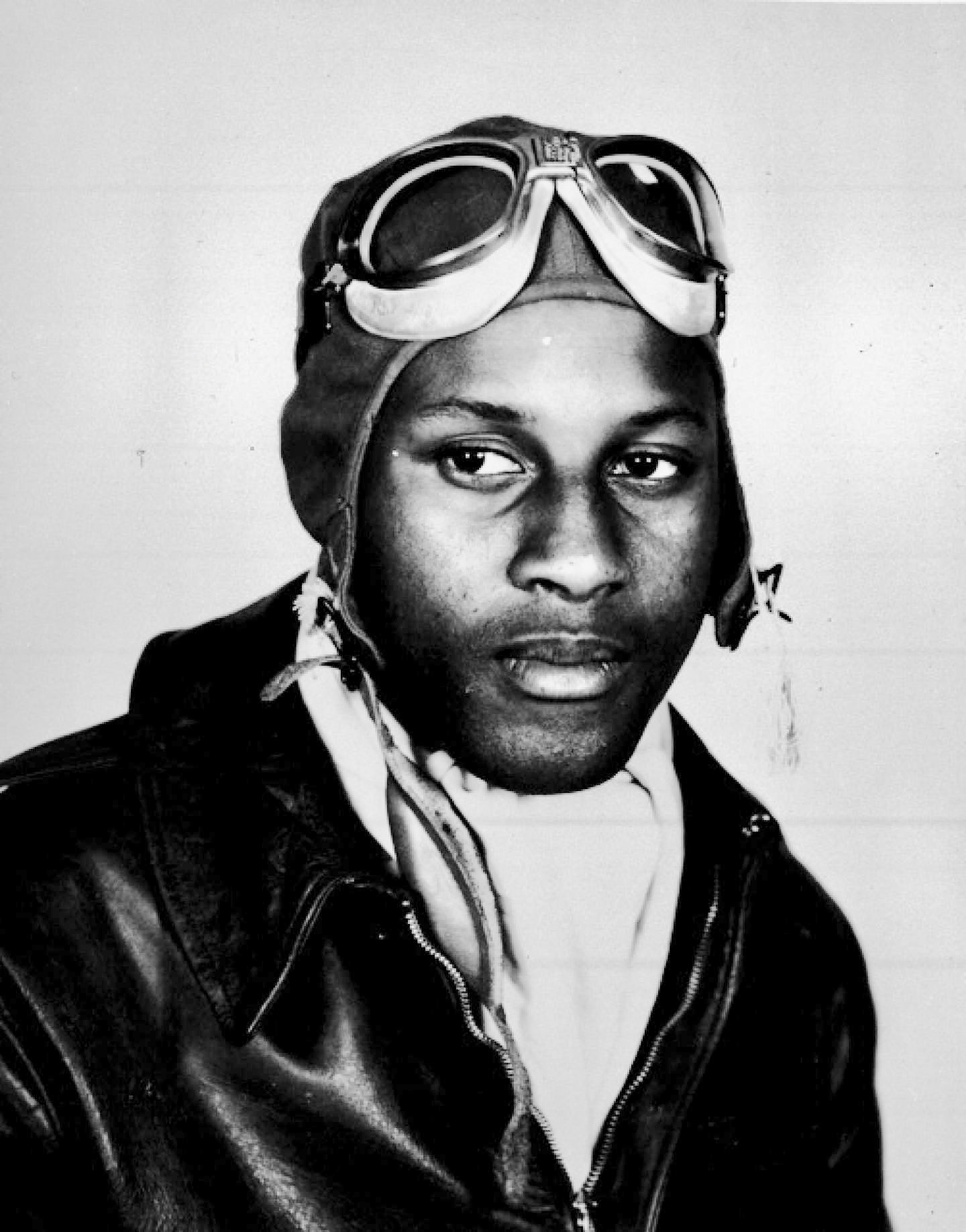
Charles Hall was part of a group of African-American airmen that would be known as the Tuskegee Airmen. They were initially trained at the Tuskegee Institute, Tuskegee, Alabama, an all-black college which had been established in 1881 by Booker T. Washington. Initial flight training was conducted at Moton Field, a few miles away, and the cadets transitioned into operational aircraft at Tuskegee Army Air Field. Additional flight trained took place at Cochran Field, near Montgomery, Alabama.
On completion of training, Charles B. Hall was commissioned as a second lieutenant, U.S. Army Air Corps, on 3 July 1942. (Serial number 0790457)
Lieutenant Charles B. Hall married Miss Maxine Jessie Parish, a stenographer, in Vigo County, Indiana, 14 December 1942.
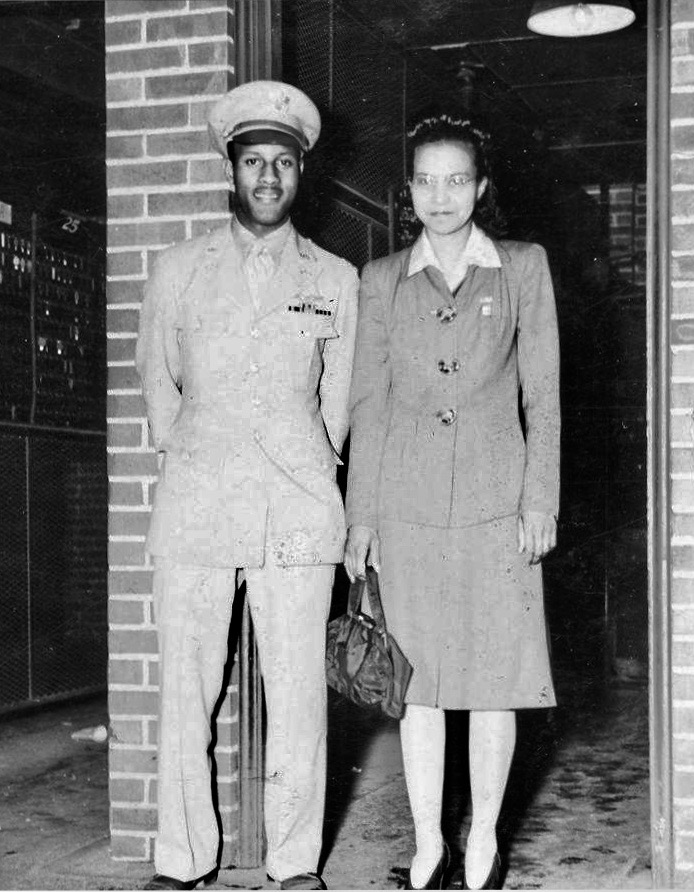
The 99th Fighter Squadron was the first unit to be assigned overseas. It was sent to North Africa, 2 April 1943, as part the 33rd Fighter Group.
The 99th Fighter Squadron was the first unit to be assigned overseas. It was sent to North Africa, 2 April 1943, as part the 33rd Fighter Group.
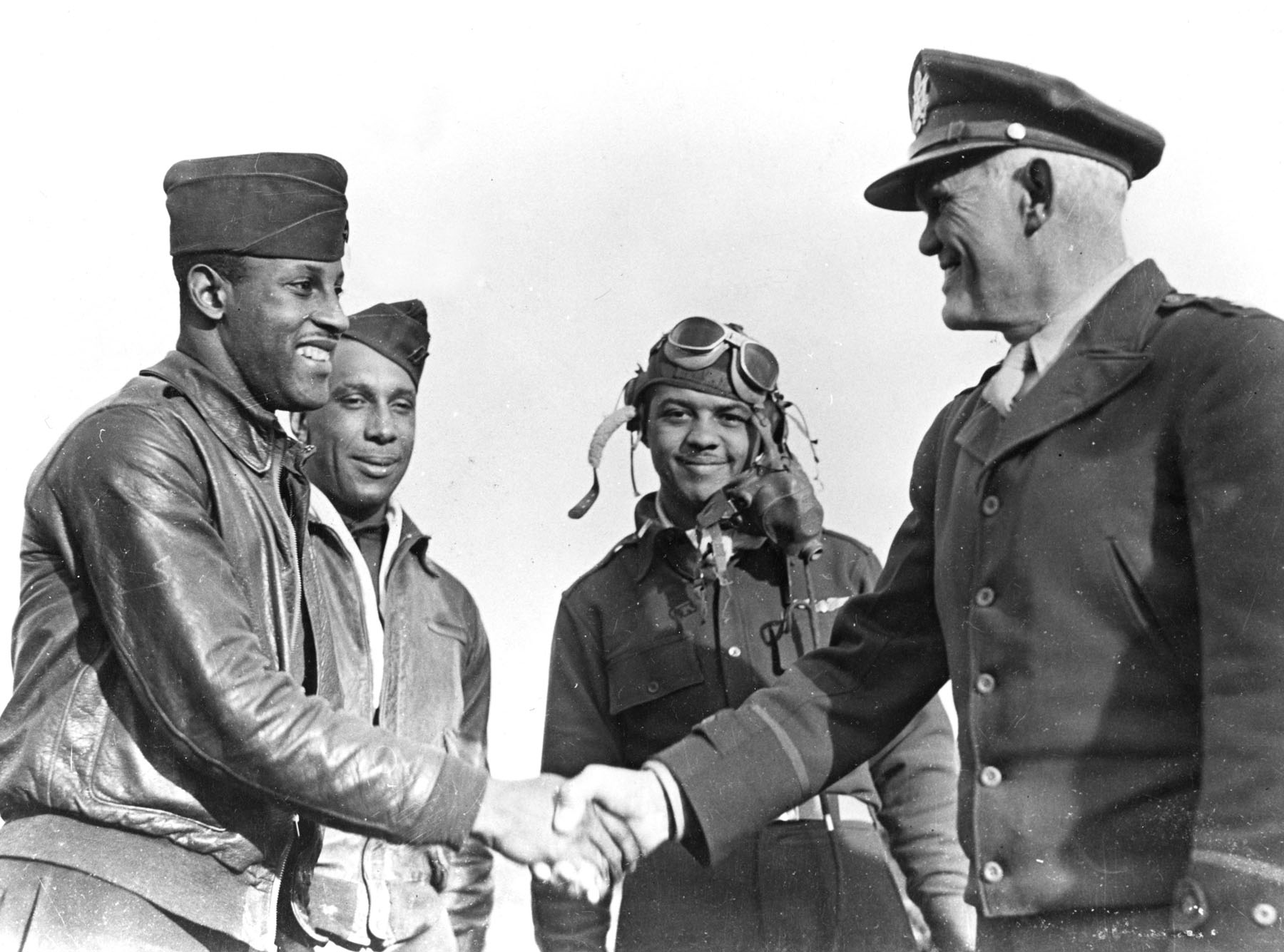
Hall was the first African-American to be awarded the Distinguished Flying Cross. Before the war ended, he had flown 198 combat missions and had been promoted to the rank of major.
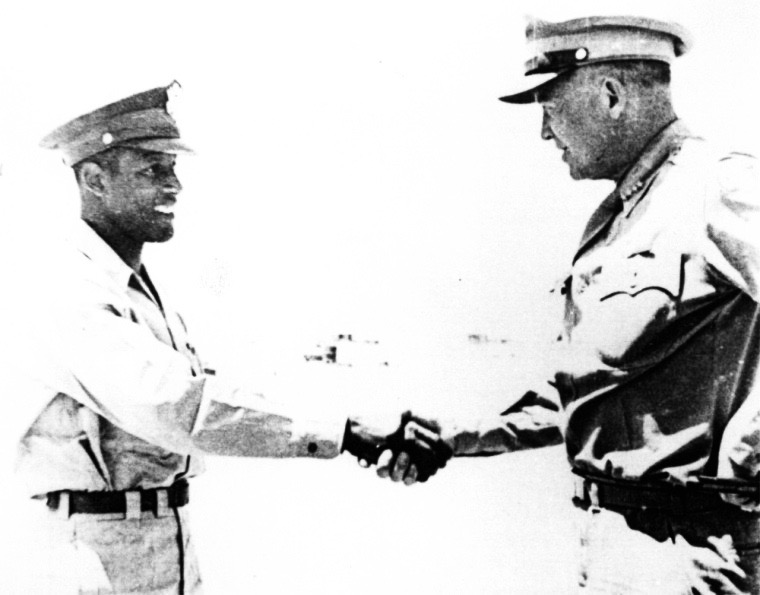
Major Hall transferred to the Air Force Reserve. He worked at Tinker Air Force Base, Oklahoma City, as a civil service employee from 1949 until retiring in 1967. He then worked at the Federal Aviation Administration.
Hall later married Miss Lola Delois Miles of Oklahoma City. They had two children and remained together until his death, 22 November 1971.
Major Charles Blakesly Hall, United States Air Force (Retired), was buried at Hillcrest Memorial Gardens, Oklahoma City, Oklahoma.
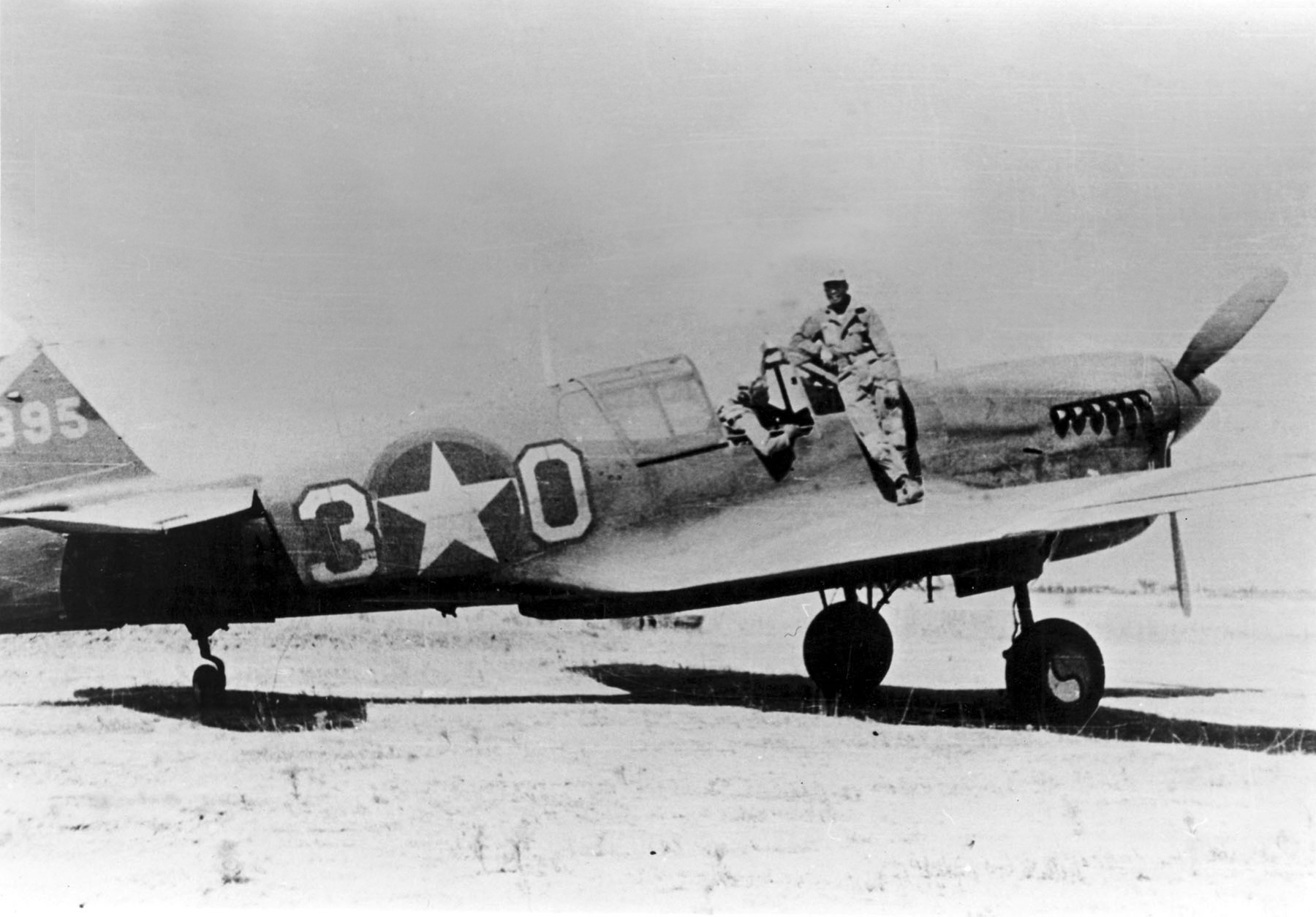

The P-40L was a lightened version of the P-40F, with fuel tanks removed from the wings, and armament reduced from six to four Browning AN-M2 .50-caliber machine guns, with only 201 rounds of ammunition per gun. Identifying features of the P-40F and P-40L are the absence of a carburetor intake on the top of the engine cowling, a very deep radiator scoop below the propeller spinner, and a fuselage lengthened 2 feet, 2 inches (0.660 meters).
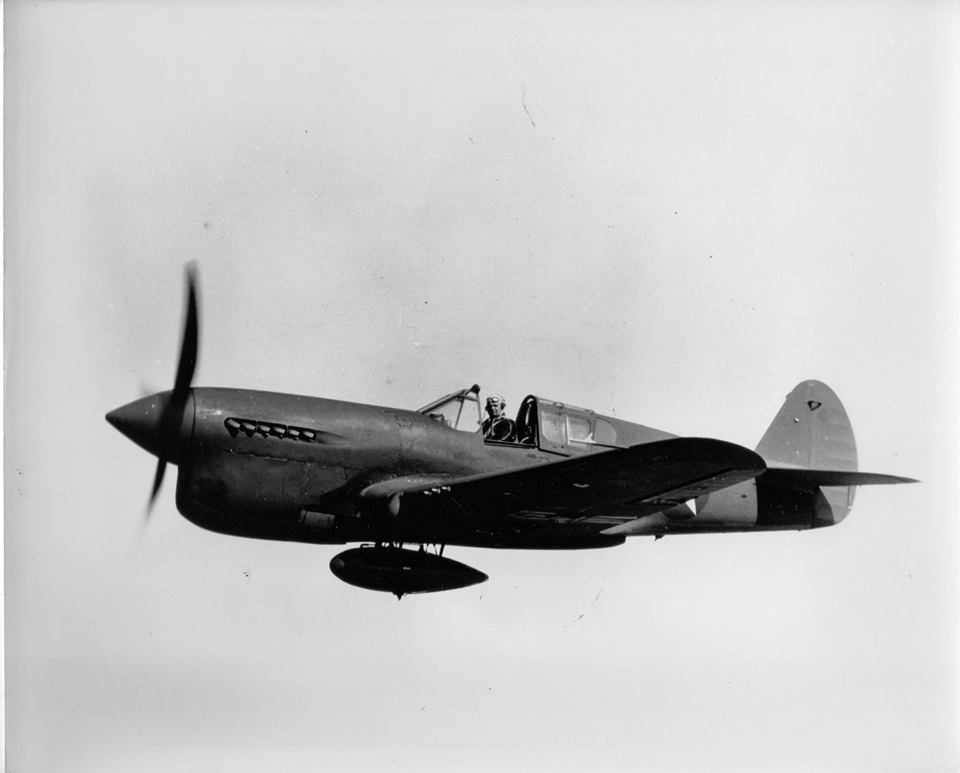
The P-40L was 33 feet, 3-23/32 inches (10.15286 meters) long with a wingspan of 37 feet, 3½ inches (11.36650 meters) and height of 10 feet, 7-25/32 inches (3.24564 meters). The fighter’s empty weight was approximately 6,870 pounds (3,116 kilograms) and the gross weight was 9,416 pounds (4,271 kilograms).
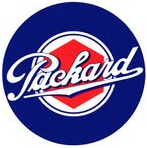
The P-40L had a maximum speed of 368 miles per hour (592 kilometers per hour).
Curtiss-Wright built 13,738 P-40-series aircraft. 3,866 of these were the P-40L variant.
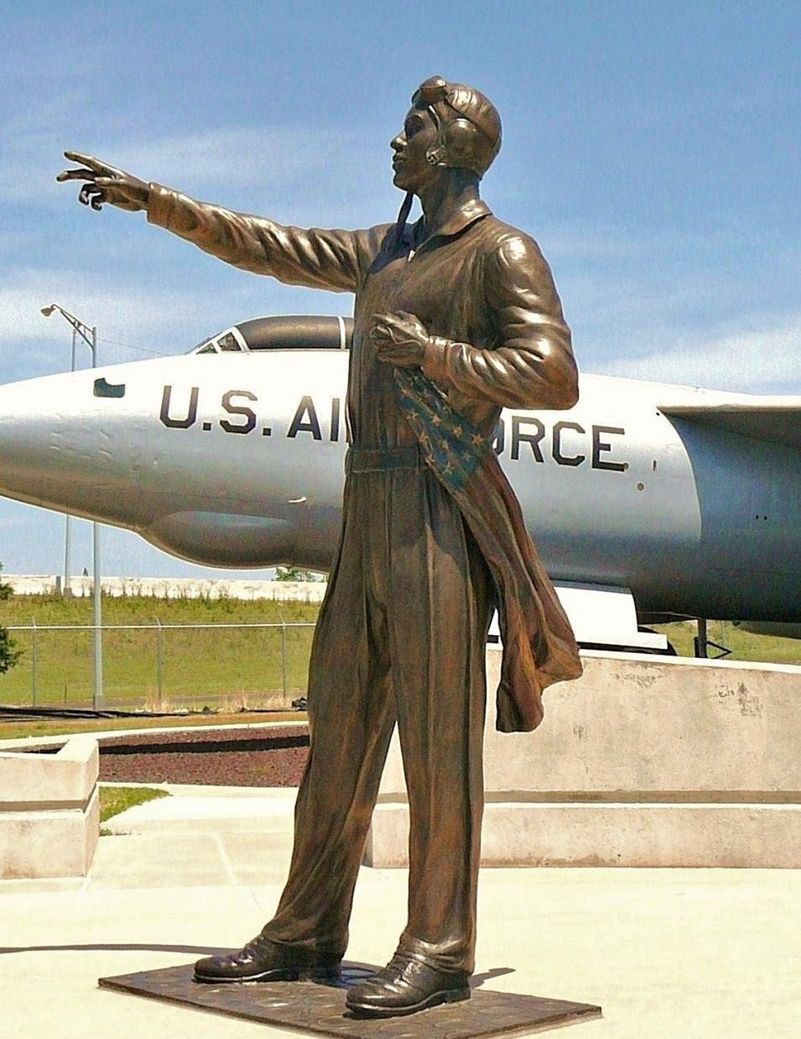
¹ A study of U.S. Army Air Force claims of enemy aircraft destroyed (Andrew Arthy and Morten Jessen, 2013) indicates that no Focke Wulf Fw 190s were present at the time, however, Messerchmitt Bf 109s of Jagdgeschwader 77 were defending the target against B-25s and P-40s. Two were lost on that day. The authors suggest that opposing aircraft were often misidentified.
© 2018, Bryan R. Swopes
